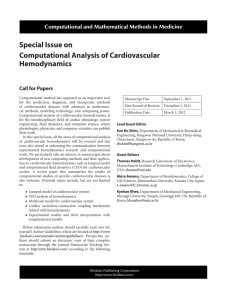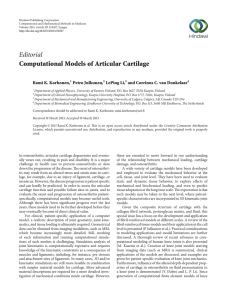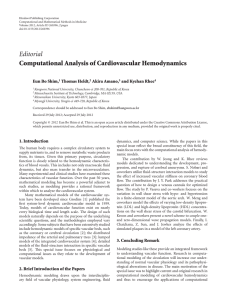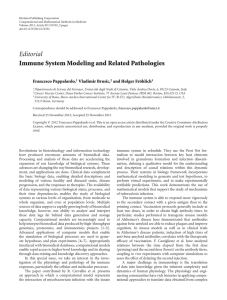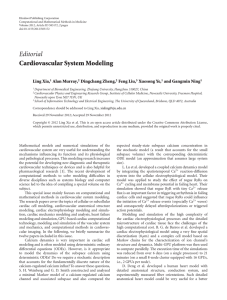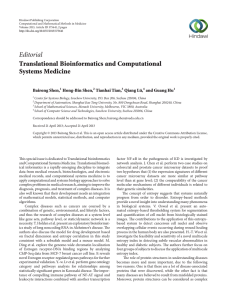Special Issue on Interactions between Electromagnetic (EM) Fields and
advertisement
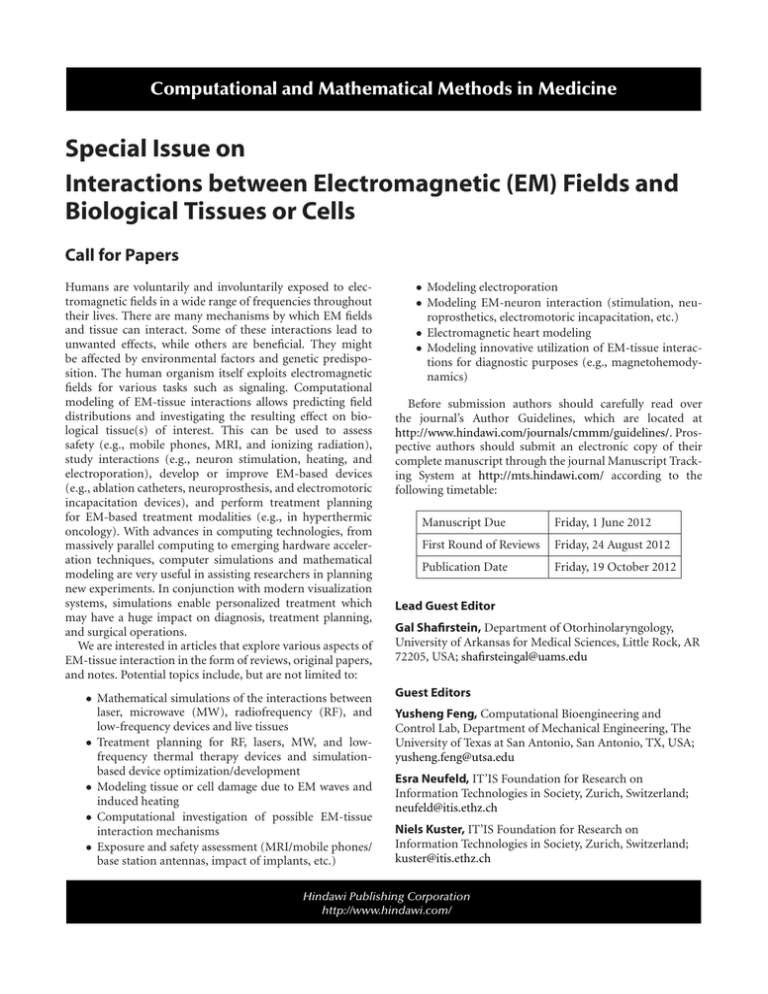
Computational and Mathematical Methods in Medicine Special Issue on Interactions between Electromagnetic (EM) Fields and Biological Tissues or Cells Call for Papers Humans are voluntarily and involuntarily exposed to electromagnetic fields in a wide range of frequencies throughout their lives. There are many mechanisms by which EM fields and tissue can interact. Some of these interactions lead to unwanted effects, while others are beneficial. They might be affected by environmental factors and genetic predisposition. The human organism itself exploits electromagnetic fields for various tasks such as signaling. Computational modeling of EM-tissue interactions allows predicting field distributions and investigating the resulting effect on biological tissue(s) of interest. This can be used to assess safety (e.g., mobile phones, MRI, and ionizing radiation), study interactions (e.g., neuron stimulation, heating, and electroporation), develop or improve EM-based devices (e.g., ablation catheters, neuroprosthesis, and electromotoric incapacitation devices), and perform treatment planning for EM-based treatment modalities (e.g., in hyperthermic oncology). With advances in computing technologies, from massively parallel computing to emerging hardware acceleration techniques, computer simulations and mathematical modeling are very useful in assisting researchers in planning new experiments. In conjunction with modern visualization systems, simulations enable personalized treatment which may have a huge impact on diagnosis, treatment planning, and surgical operations. We are interested in articles that explore various aspects of EM-tissue interaction in the form of reviews, original papers, and notes. Potential topics include, but are not limited to: • Mathematical simulations of the interactions between • • • • laser, microwave (MW), radiofrequency (RF), and low-frequency devices and live tissues Treatment planning for RF, lasers, MW, and lowfrequency thermal therapy devices and simulationbased device optimization/development Modeling tissue or cell damage due to EM waves and induced heating Computational investigation of possible EM-tissue interaction mechanisms Exposure and safety assessment (MRI/mobile phones/ base station antennas, impact of implants, etc.) • Modeling electroporation • Modeling EM-neuron interaction (stimulation, neu- roprosthetics, electromotoric incapacitation, etc.) • Electromagnetic heart modeling • Modeling innovative utilization of EM-tissue interactions for diagnostic purposes (e.g., magnetohemodynamics) Before submission authors should carefully read over the journal’s Author Guidelines, which are located at http://www.hindawi.com/journals/cmmm/guidelines/. Prospective authors should submit an electronic copy of their complete manuscript through the journal Manuscript Tracking System at http://mts.hindawi.com/ according to the following timetable: Manuscript Due Friday, 1 June 2012 First Round of Reviews Friday, 24 August 2012 Publication Date Friday, 19 October 2012 Lead Guest Editor Gal Shafirstein, Department of Otorhinolaryngology, University of Arkansas for Medical Sciences, Little Rock, AR 72205, USA; shafirsteingal@uams.edu Guest Editors Yusheng Feng, Computational Bioengineering and Control Lab, Department of Mechanical Engineering, The University of Texas at San Antonio, San Antonio, TX, USA; yusheng.feng@utsa.edu Esra Neufeld, IT’IS Foundation for Research on Information Technologies in Society, Zurich, Switzerland; neufeld@itis.ethz.ch Niels Kuster, IT’IS Foundation for Research on Information Technologies in Society, Zurich, Switzerland; kuster@itis.ethz.ch Hindawi Publishing Corporation http://www.hindawi.com/


